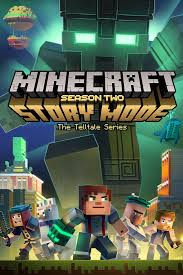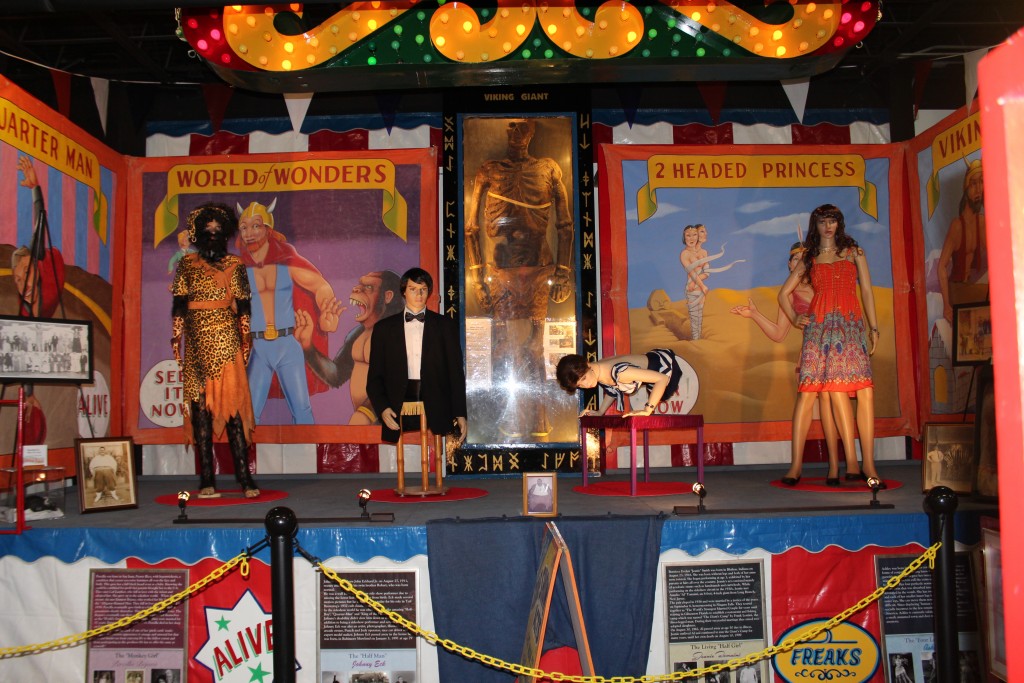Roll Up! Roll Up! Will Artistic Immersion and Creation Turn the Tip for New Bairns?

Minecraft Video Game Television Series

Typical Circus Side Show
Professor Joe Goldblatt
First, some important definitions. In the early days of the circus and carnival side shows the talker was positioned out front of the side show who shouted “Roll up! Roll Up!” He or she was actually saying “Come closer! Step right up! Come one come all!” The term “tip” was used to describe the audience members directly below and in front of the talker who stood before them upon a raised bally platform. The talker introduced brief samples of each act that later could be seen inside and he or she who used a “ballyhoo” manner of loud and exciting speech to entice the audience (“turn the tip”) to purchase tickets to the side show.
Now that you know the lingo (language) of the circus and carnival, roll up with me as we research the changing tastes of the present and future members of the tip.
How many 5 and 8 year old grandsons have grandparents who were once successful professional clowns? I would argue this field is quite limited in terms of competition. However, today, in no uncertain terms I was warned that expiry date is fast approaching unless we change our approach.
Recently, a travelling tent circus raised its poles in Edinburgh and I offered to take our grandchildren and include all the usual additional treats such as front row seating, popcorn, soda, and official merchandise. To my shock and horror my eight year old grand son looked me directly in the eye and said “The circus is old fashioned.”
I was speechless. I looked over to my fellow clown with whom I have been performing for nearly fifty years and she too was surprised. I then turned to my five year old grand son and asked him if he agreed with his older brother? He quickly nodded in agreement. This is not surprising as he usually agrees with his big brother.
I then asked both grandsons if they would participate in some informal marketing research and tell me why they believe the circus is “old fashioned?”
Without hesitation they said that it appears, from the look of the posters advertising the show, to be dark and boring. When I asked them what would make it more exciting and convince them to attend they mentioned a television show they adore entitled Minecraft.
Suddenly I felt as though I was lost in the catacombs of a new world that I did not imagine nor understand. Therefore, I decided to conduct some further research.
The average age for Minecraft participants is quite broad and ranges from young children such as my grands to 24 years or older. According to my AI friends young children love the show because it is creative and engaging and encourages them to learn about the games mechanics and encourages their own game creations.
My mind immediately returned to the old fashioned circus and the broader world of live entertainment. I cannot remember a recent traditional entertainment programme other than Sesame Street that promotes learning about game mechanics and encourages gaming creation. Perhaps this is the gap that the modern circus and other entertainment creators must close if they are to entice my critical grandsons to roll up to their show?
A 2021 YouTube study found that over one trillion people from all ages had viewed Minecraft videos. While the average age of viewership is 24 and the majority of viewers are males, the appeal of Minecraft is broad and deep.
Having failed at inviting my grandsons to the circus I asked them about attending a puppet show because their grandparents are also puppeteers and collect dozens of puppet figures which are displayed throughout our home and often played with by our grandsons.
Their eyes glazed over, they lowered their chins, and they shook their heads somberly from left to right.
I asked them what was wrong with puppets and they replied “Minecraft has better characters”.
Feeling extremely frustrated I finally told them that if they did not want to go to the circus or a puppet show I would take them to the ballet and the orchestra. My clown partner then quickly added cheerfully “And to the opera too!”
They were having none of it. First one and then the other began staring into the distance as if some imaginary screen suddenly was being filled with MInecraft images. I realised then that I had lost them. At least for that moment.
Therefore, in a world of 24 hour per day entertainment I wonder how parents and grandparents with disposable cash can best entertain their bairns in the twenty – first century? The answer actually emerged from the creators of Minecraft.
Markus “Notch” Persson created Minecraft in 2009 to fully engage his audience in an activity that was more relaxing and open – ended than existing games and giving his players the ability to create anything they wished. He found his “Notch” by making a form of entertainment that is easy, accessible, and stimulates individual creativity. And all of this is available on line or at your local retailer for under £20!
In order for the circus, puppet shows, and even ballet, orchestras, and opera to compete with Minecraft they must not replicate their content, however, they have much to learn about what theatre makers describe as immersive theatre. As early as 1963 American theatre companies were utilizing immersive techniques to engage their audience members.
One of the leaders in this effort was the director of the Trinity Rep theatre in Providence, Rhode Island. This theatre company was one of the first to perform at the Edinburgh International Festival. Their director from 1963 to 1989 was Adrian Hall. When he assumed his post he received public funding to perform Shakespeare for high school students. In order to seize their attention and fully engage them he build a thrust platform into the centre of the audience and soon the young people were surrounded by swords, daggers, chain mail, and even fake blood. These young audience members over time became regular attendees and loyal supporters of this Tony Award winning regional theatre company.
In order to compete with modern digital storytelling we must work harder to engage and encourage the creative decision making of the young audience as they seek to become part of the story and also help, where appropriate, allow them to determine the outcome by using the power of individual choice.
I only hope that one day the circus and other traditional art forms may be looked at as not merely a nostalgic era from the past but rather a contemporary forum for, as does Minecraft does so effectively with easy access and allowing a creative determination of the future.
Who knows, the wee brains in our wee bairns might just be using a future immersive artistic forum to envision and create a better world for all of us.
Professor Joe Goldblatt is Emeritus Professor of Planned Events at Queen Margaret University. His views are his own. To learn more about his views visit www.joegoldblatt.scot
